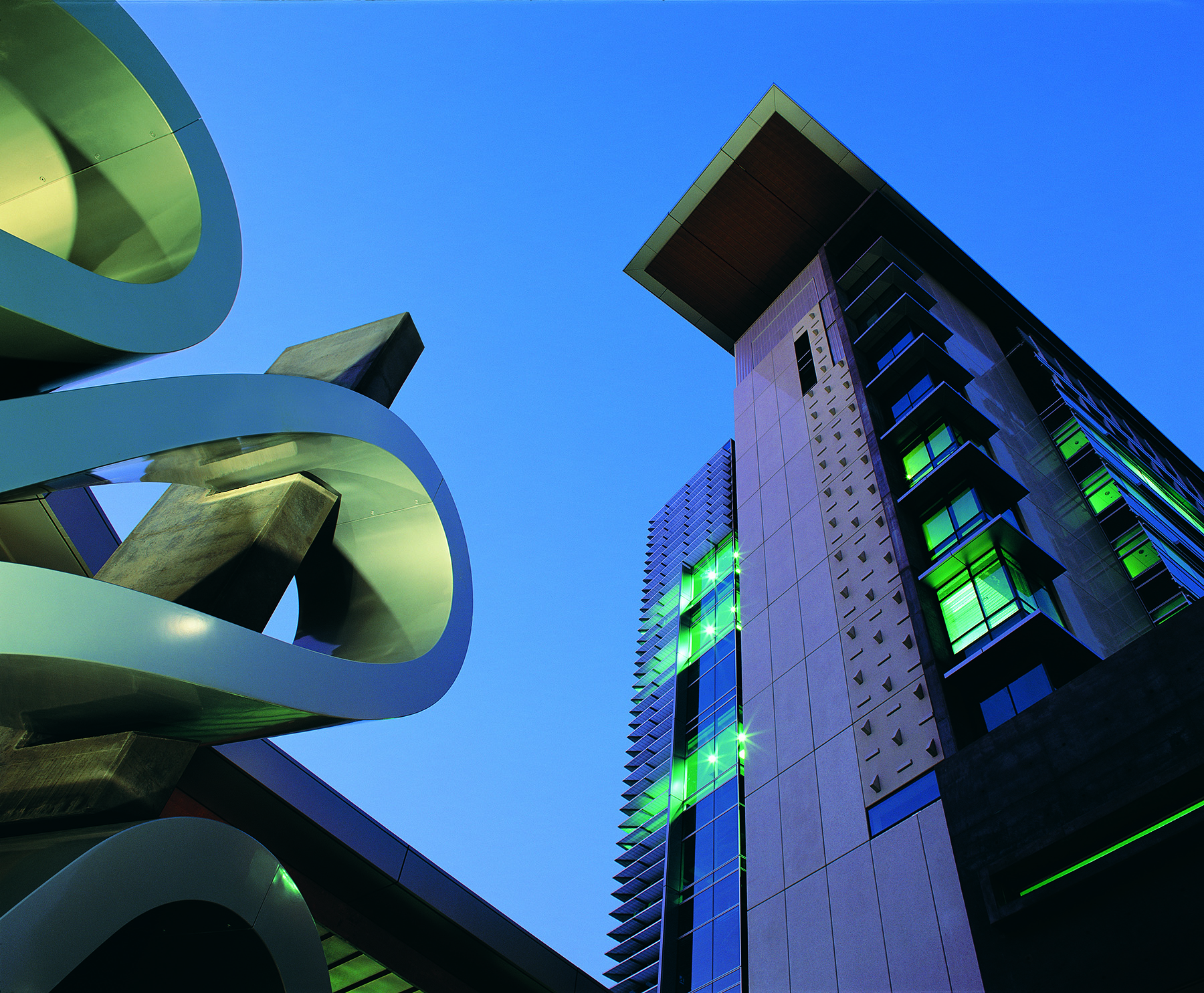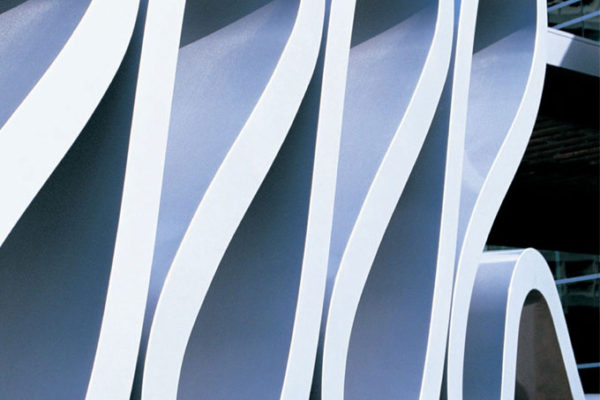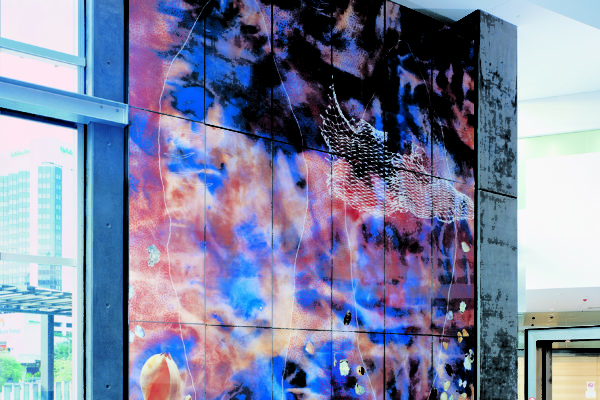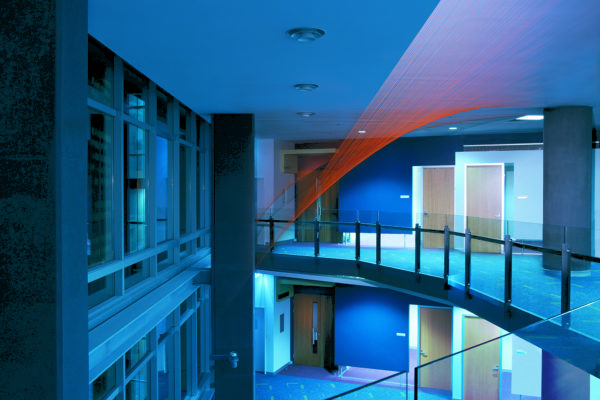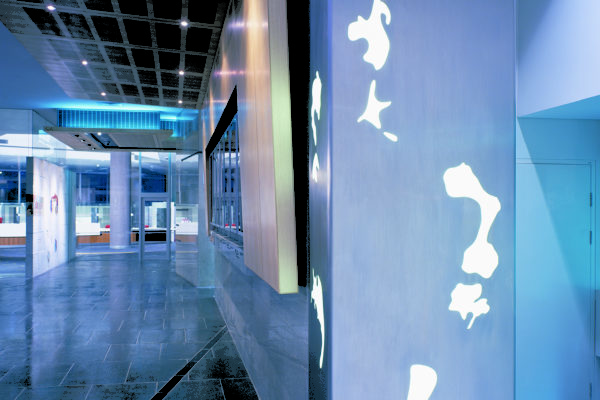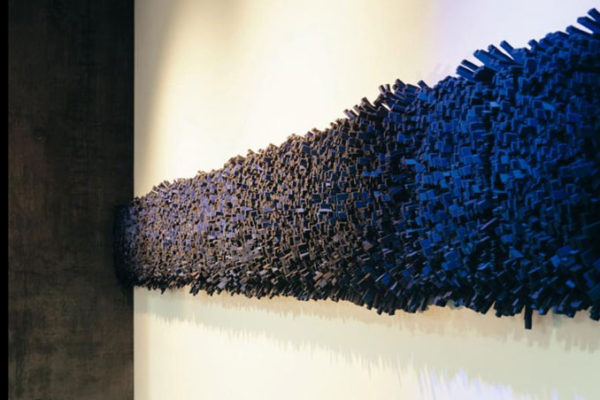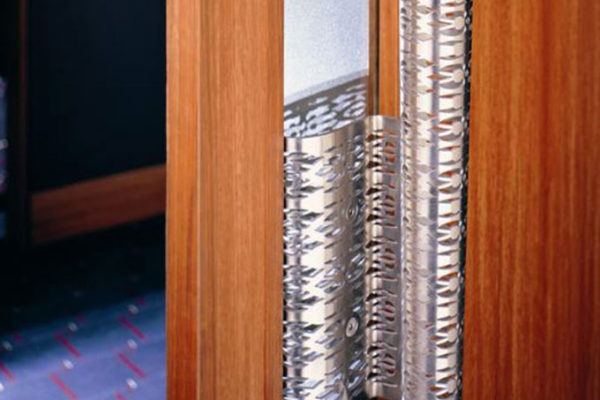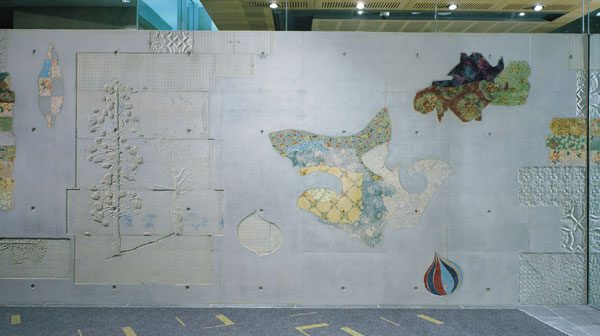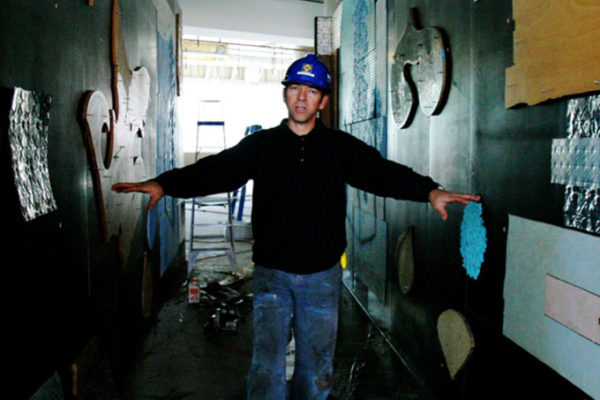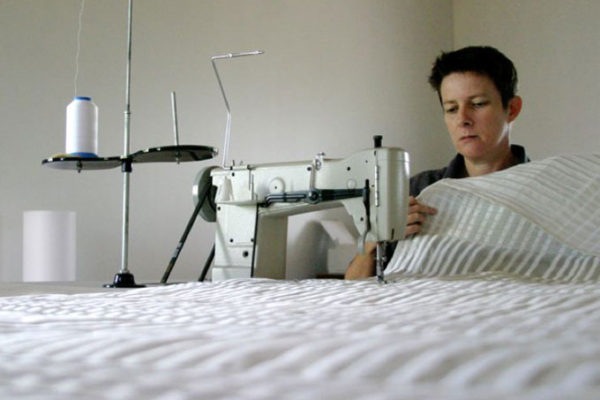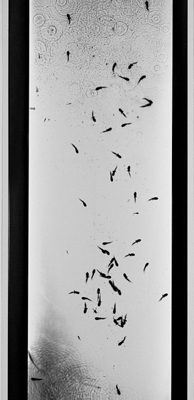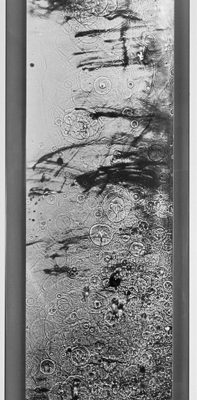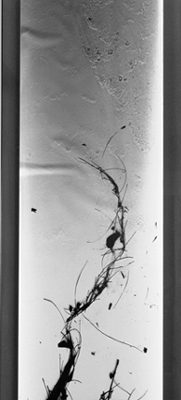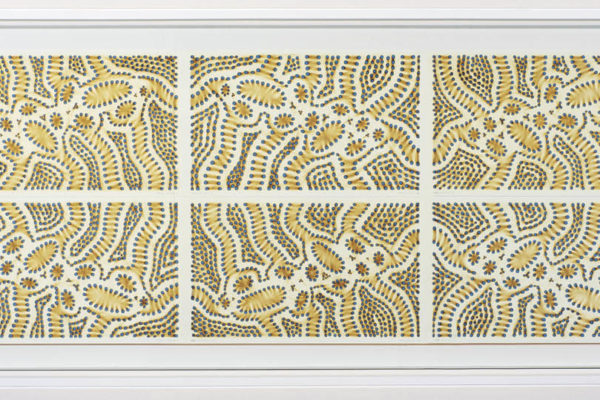Brisbane Magistrates Court (BMC) 2002–04
Curator: Jay Younger
Project Manager: Brecknock Consulting
Architects: Cox Rayner
Commissioner: Justice and Attorney General
Budget: $1.7 million
Artists/Designers: Eugene Carchesio, Sebastian Di Mauro, Marian Drew, Fiona Foley, Barbara Heath, Jude Kentish, Guy Parmenter, Freya Pinney, Bruce Reynolds, Sandra Selig, Dan Templeman, Judy Watson, Lilla Watson, and Judith Wright
Photography: Stefan Jannides
Download the project catalogue (PDF)
Prior to Queen Elizabeth II Courts of Law, the largest scale high-profile project I have curated is the Brisbane Magistrates Court (BMC), an acknowledged exemplar of best practice in public art collaboration. The project involves 14 integrated art and design commissions, and represents the largest completed Art Built-in allocation at the time at $1.7 million. My selection for BMC showcases some of Queensland’s most innovative critically engaged artists and designers, from emerging to internationally recognised. BMC presents a number of firsts in curatorial commissioning that I am responsible for initiating and implementing:
- The project moved beyond the traditional commissions for Law Courts, which usually include austere symbols of state authority, such as statues of liberty, scales of justice and crests.
- ‘Process Art’ was chosen as the curatorial framework to provide a reflective metaphor for the legal process. The major concept is that the artistic outcome is the consequence of a set of actions. The artwork is evidence of the actions undertaken and reflects on ‘the laws of nature’ in a cause-and-effect situation. The metaphoric relationship between the artistic and legal processes within a coherent system is the lynchpin of the curatorial rationale.
- In keeping with the non-traditional media used by process artists, the commissioned artists used a wide variety of media not associated with permanent public art thereby creating innovation in this context.
- As is consistent with the procedural and systematic aspects of ‘Process Art’, the artists used series and system to link works throughout the building thereby creating a more cohesive viewing experience.
- ‘Direct commission’ as an expression of commitment was used on BMC, which is rarely used in AB-i.
- It was the first involvement with public art for eight of the fourteen critically engaged artists.
- The project included emerging artists at the time (such as Dan Templeman) in key sites with major budgets.
- Three Indigenous women artists were commissioned. Fiona Foley had the largest budget allocation overall, and produced a politically charged work relating to Aboriginal massacres. This commission was the first major commission for Foley. Similarly, Judy Watson’s artwork is the largest allocation for the interior works and was the first commission for Watson in Queensland.
The project received an RAIA award for public art and critical coverage in Architecture Australia, The Australian and the Sydney Morning Herald Weekend Magazine. The project has been the subject of various conferences presentations.


